备战2022年高考英语二轮复习专题06-动词和短语动词课件(34张)
文档属性
| 名称 | 备战2022年高考英语二轮复习专题06-动词和短语动词课件(34张) |  | |
| 格式 | ppt | ||
| 文件大小 | 4.1MB | ||
| 资源类型 | 教案 | ||
| 版本资源 | 通用版 | ||
| 科目 | 英语 | ||
| 更新时间 | 2021-12-31 18:44:26 | ||
图片预览


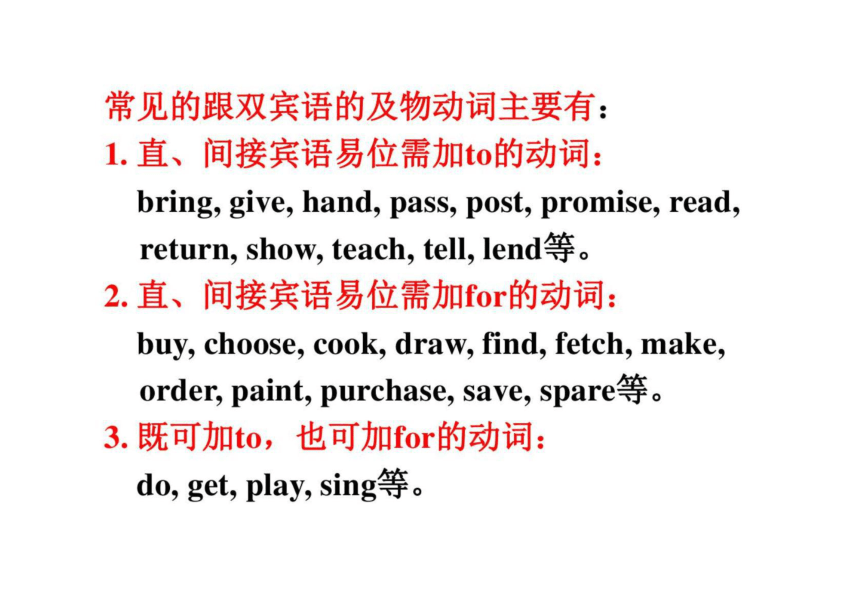

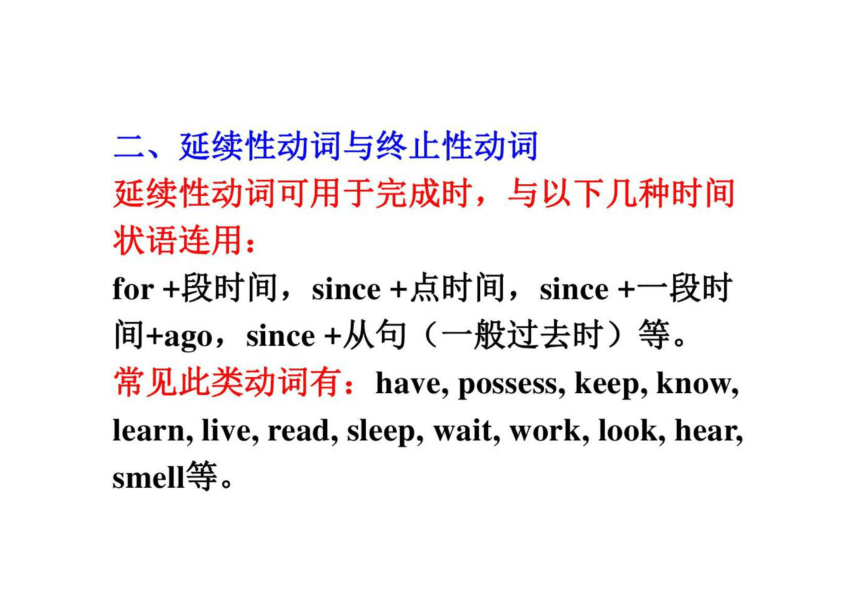

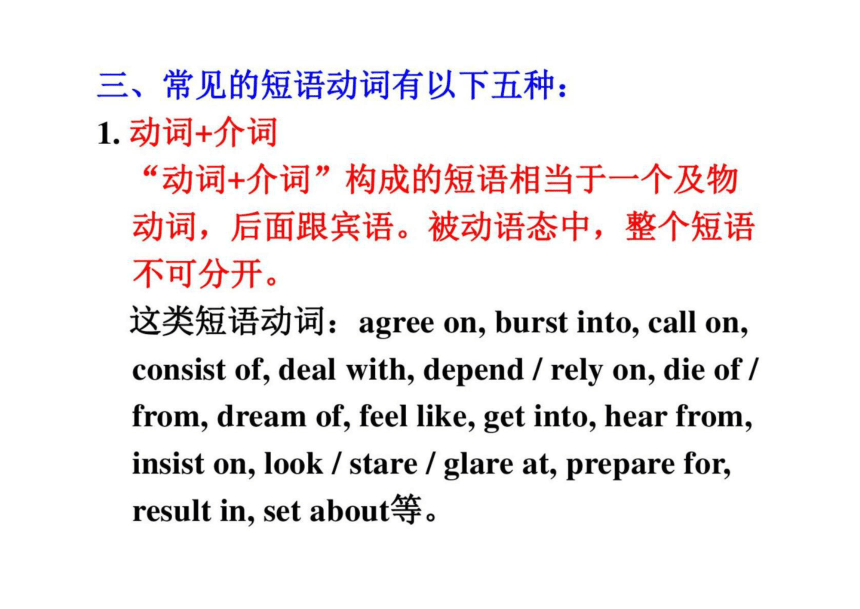
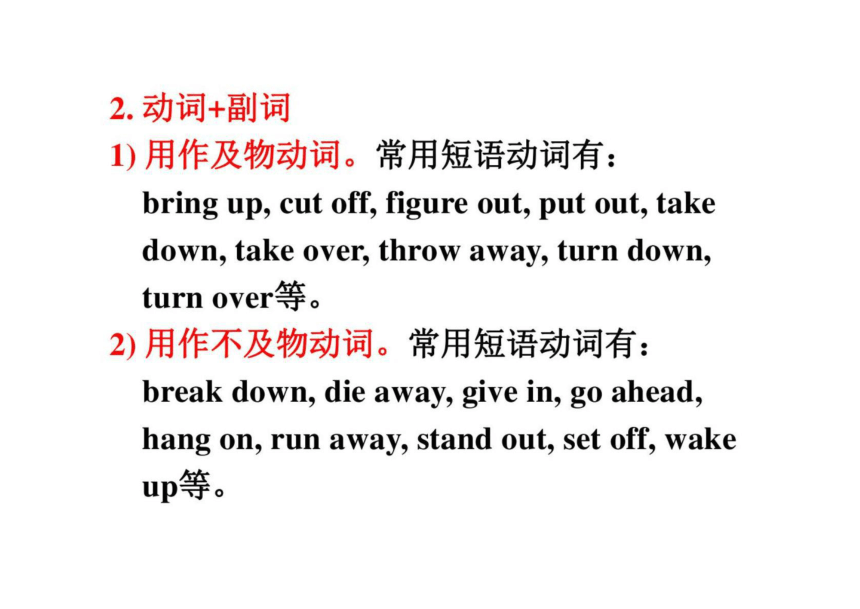



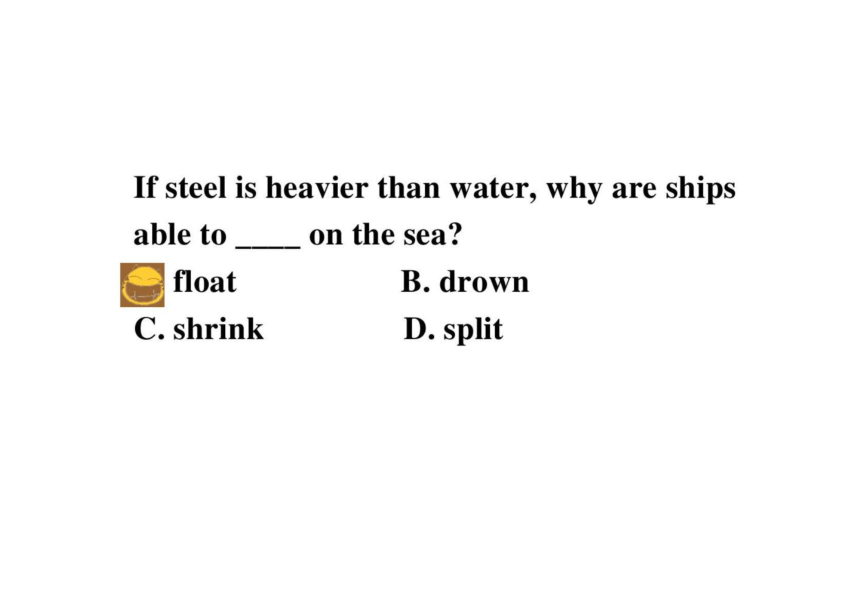
文档简介
(共34张PPT)
动词和短语动词
及物动词与不及物动词
常见的跟单宾语的及物动词主要有:
accept, admire, admit, affect, afford
discover, educate, enjoy, explain, forget,
gues, invent,love,post, raise等。
常见的跟双宾语的及物动词主要有:
1.直、间接宾语易位需加to的动词:
bring, give, hand, pass, post, promise, read
return,show, teach, tell. lend等。
2.直、间接宾语易位需加for的动词
buy, choose, cook, draw, find, fetch, make,
order,. paint, purchase,save, spare等。
3.既可加to,也可加for的动词:
do,get,play,sing等。
常见的不及物动词主要有:
ache, agree, apologize, appear, arrive, come,
go, cry, dance, die, disappear, dream, exist,
fall, flow, graduate, sit, stand, stay, wait, rise,
ie, happen等。
延续性动词与终止性动词
延续性动词可用于完成时,与以下几种时间
状语连用:
for+段时间, sInce+点时间, sInce+一段时
间+ago, sInce+从句(一般过去时)等。
常见此类动词有:have, possess,kep,know,
learn, live, read, sleep wait, work, look, hear
sme等
终止性动词不可用于现在完成时,不能与表
示一段时间的状语连用,其否定形式多与
until/ti连用
not+终止性动词+ until/ti直到.才
●●●。●
如
I will not go to bed until I finish drawing the
picture tonight.
三、常见的短语动词有以下五种:
1.动词+介词
“动词+介词”构成的短语相当于一个及物
动词,后面跟宾语。被动语态中,整个短语
不可分开。
这类短语动词: agree on, burst into, call on,
consist of, deal with, depend /rely on, die of
from, dream of, feel like, get into, hear from,
insist on, look /stare/glare at, prepare for,
result in, set about等。
动词和短语动词
及物动词与不及物动词
常见的跟单宾语的及物动词主要有:
accept, admire, admit, affect, afford
discover, educate, enjoy, explain, forget,
gues, invent,love,post, raise等。
常见的跟双宾语的及物动词主要有:
1.直、间接宾语易位需加to的动词:
bring, give, hand, pass, post, promise, read
return,show, teach, tell. lend等。
2.直、间接宾语易位需加for的动词
buy, choose, cook, draw, find, fetch, make,
order,. paint, purchase,save, spare等。
3.既可加to,也可加for的动词:
do,get,play,sing等。
常见的不及物动词主要有:
ache, agree, apologize, appear, arrive, come,
go, cry, dance, die, disappear, dream, exist,
fall, flow, graduate, sit, stand, stay, wait, rise,
ie, happen等。
延续性动词与终止性动词
延续性动词可用于完成时,与以下几种时间
状语连用:
for+段时间, sInce+点时间, sInce+一段时
间+ago, sInce+从句(一般过去时)等。
常见此类动词有:have, possess,kep,know,
learn, live, read, sleep wait, work, look, hear
sme等
终止性动词不可用于现在完成时,不能与表
示一段时间的状语连用,其否定形式多与
until/ti连用
not+终止性动词+ until/ti直到.才
●●●。●
如
I will not go to bed until I finish drawing the
picture tonight.
三、常见的短语动词有以下五种:
1.动词+介词
“动词+介词”构成的短语相当于一个及物
动词,后面跟宾语。被动语态中,整个短语
不可分开。
这类短语动词: agree on, burst into, call on,
consist of, deal with, depend /rely on, die of
from, dream of, feel like, get into, hear from,
insist on, look /stare/glare at, prepare for,
result in, set about等。
